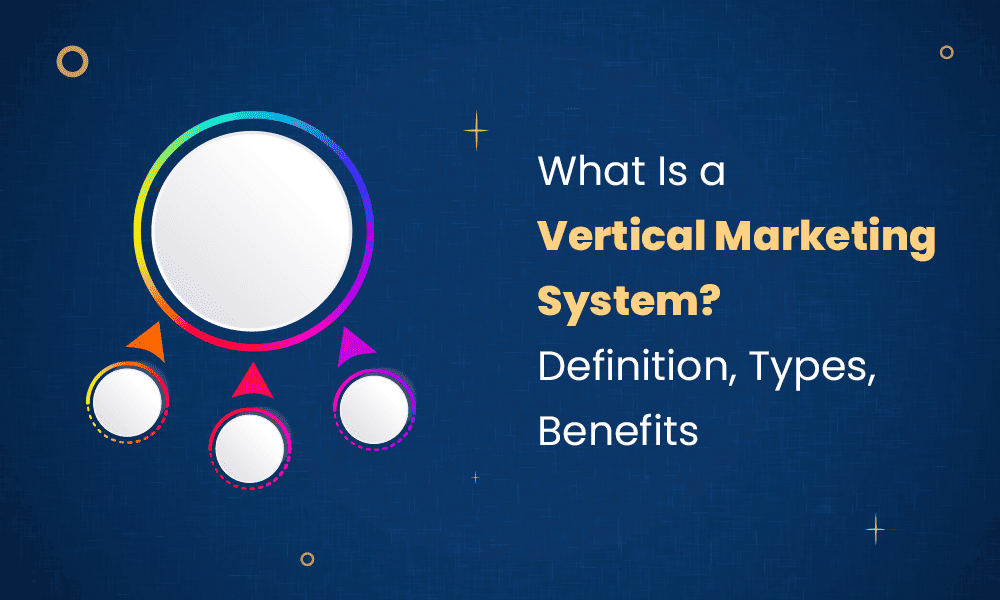Achieving customer satisfaction very rarely comes down to one team in a company.
It’s through a combination of efforts from the sales, marketing, and customer service teams, yes, but it also goes beyond the confines of your business to include retailers, wholesalers, and producers as well.
Vertical marketing systems streamline this process to enhance the customer experience overall.
In today’s article, we’ll discuss what vertical marketing is and how it’s beneficial to have a vertical marketing system for businesses of any size.
Table of Contents
What Is Vertical Marketing?
Vertical marketing is about enmeshing customers and groups of partners or companies that are already in some way interconnected, either by niche or by other criteria.
To bring that into a system entails creating distribution channel cooperation across all parties, including retailers, wholesalers, producers, and everyone in between.
The goal of utilizing a vertical marketing system is to improve sales efficiency and make each sale more economical for the parties involved.
In other words, if there’s a means of minimizing effort or expense that would benefit one or more parties in the distribution channel, then under a vertical marketing system, those means would be implemented.
This isn’t cutting corners, but making the distribution channel like a seamless, well-oiled machine. All the parts operate in conjunction with one another for the common good of better sales systems and customer satisfaction.
Mid-Funnel Marketing: A Succinct Guide [Definition, Strategies]
The Types of Vertical Marketing Systems
To put the concept of vertical marketing systems into play, let’s look at the three types of systems companies most commonly utilize.
Administered Vertical Marketing
The first of these is administered vertical marketing.
Under this system, no one within the system is contractually obligated, nor do they have any claim to corporate ownership to determine who gets the most say over how the distribution channel functions.
Instead, it comes down to a matter of power. Whether it’s the retailer, the wholesaler, or another party within the distribution channel, someone is in an elevated position of power compared to the others.
Small businesses, for example, would be exempt, as a larger retailer would have far more sway.
This allows the largest and most powerful part to control the distribution channel.
Not only does this party get a say over the members of the distribution channel under an administrative vertical marketing system (those members could be removed if need be), but the activities as well.
Read also: What Is Direct Marketing? Does It Work? [13 Ways To Do It]
Contractual Vertical Marketing
Next is contractual vertical marketing, a type of vertical marketing system that might be slightly more affable to all parties in the distribution channel.
With contractual vertical marketing, all members of the distribution channel are in contractual agreement with the other members or benefits.
In these contracts, the member benefits and the responsibilities of each are clearly outlined to prevent any unwelcome surprises later.
Another benefit of this vertical marketing system is that contractual marketing grants each member of the distribution channel the ability to select economies that scale with their own financial realities.
This can often lead to a rather competitive pricing market.
One of the most common examples of a contractual vertical marketing system is a franchise.
The franchisor sets guidelines, practices, and standards for franchisees to follow, but otherwise, they are on their own. They are still bound per the terms of the contract.
👉Supercharge your marketing with our ultimate guide on the best powerful strategies – don’t miss out! ⚡
Read also: 7 New Marketing Strategies For Cosmetics Companies
Corporate Vertical Marketing
The third and final vertical marketing system is corporate vertical marketing.
With corporate vertical marketing, one company or entity rules over the various supply chain stages, such as distribution and production.
That said, the other members of the distribution channel are still doing their own part to move things along the supply chain from start to finish.
One example of a corporate vertical marketing system is Firestone, a tire manufacturer.
Firestone owns its own tire service centers, where the company services vehicles and manufactures tires.
Another example is Amway, a marketing company that produces health, home care, and beauty products. Only certain stores get access to Amway products, and those stores must be authorized.
This allows Amway to have power over both the production of its goods and their distribution.
Why Use a Vertical Marketing System?
Vertical marketing systems (provided everyone agrees about the type of system in play and the terms outlined in the contract) can be highly advantageous for all members of the distribution channel.
These systems are designed to streamline operations and dole out responsibilities, so everyone knows their assigned roles. Even among the various vertical marketing systems, the roles are quite clear-cut.
Those with a more dominant role in the distribution channel might see an especially large upturn in profits, but all members within the distribution channel can financially benefit.

Another point of vertical marketing is to lessen or even eliminate a sense of competition between the members of the distribution channel.
There is far less conflict when contracts make clear who has which share of the distribution channel and whose responsibilities are what.
It feels far less like stepping on other people’s toes, which can foster resentment and other bad feelings and ultimately hurt business relationships.
Read also: Proven Salon Marketing Ideas to Attract More Clients
Conclusion
A vertical marketing system is a type of agreement between members of a distribution channel, such as retailers, producers, and distributors.
Whether it’s administrative vertical marketing, contractual vertical marketing, or corporate vertical marketing, these various systems exist so members of the distribution channel can select the one that’s most viable to their channel and implement it expediently.
Read also: Top Retail Marketing Strategies To Boost Customer Loyalty (Trends and Tips)
